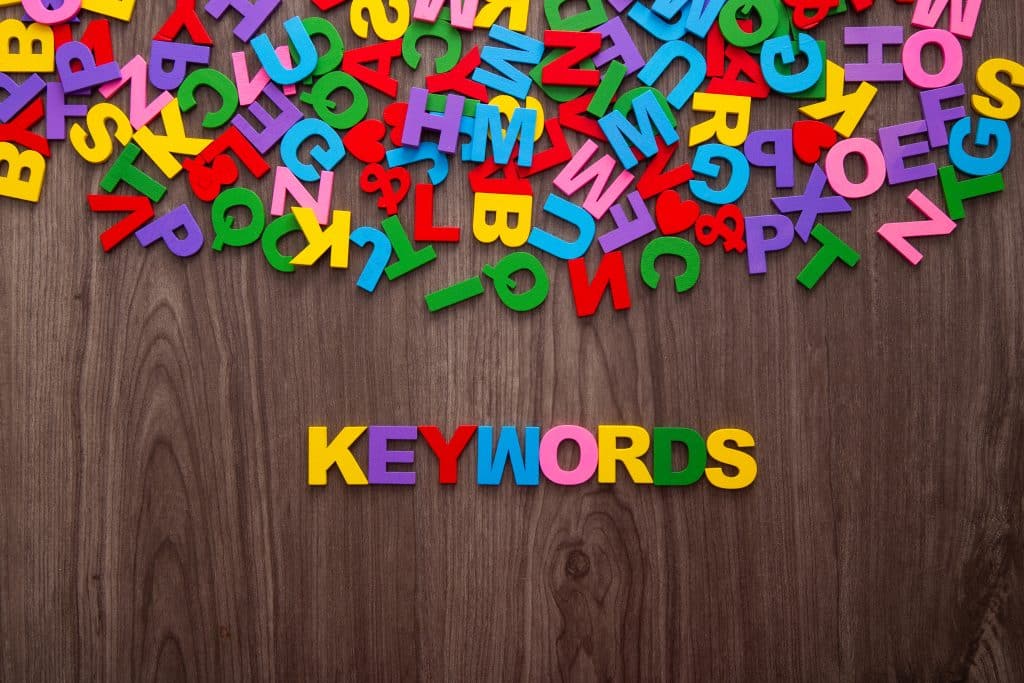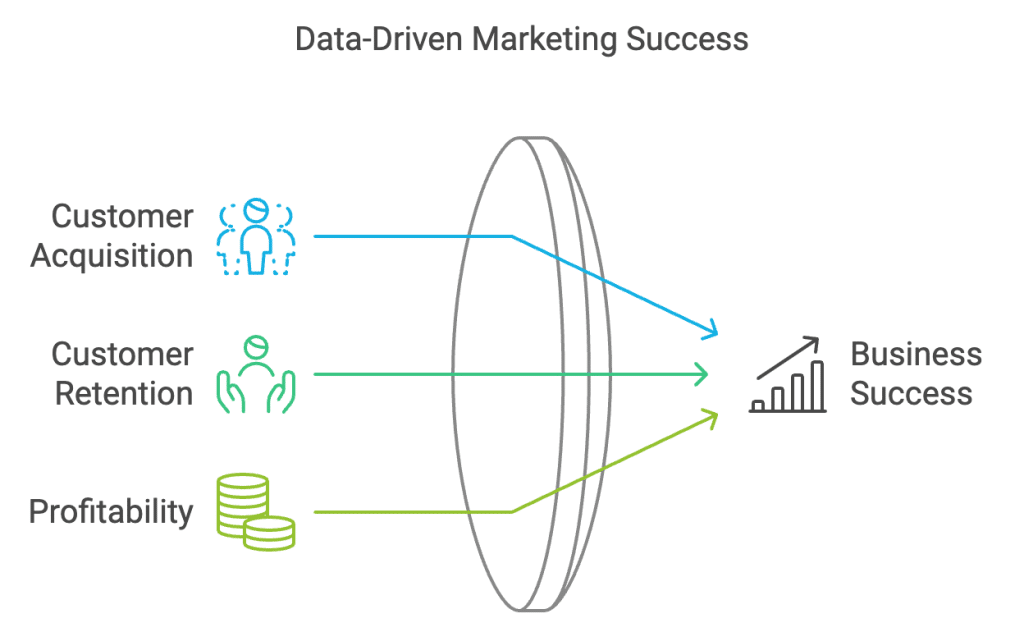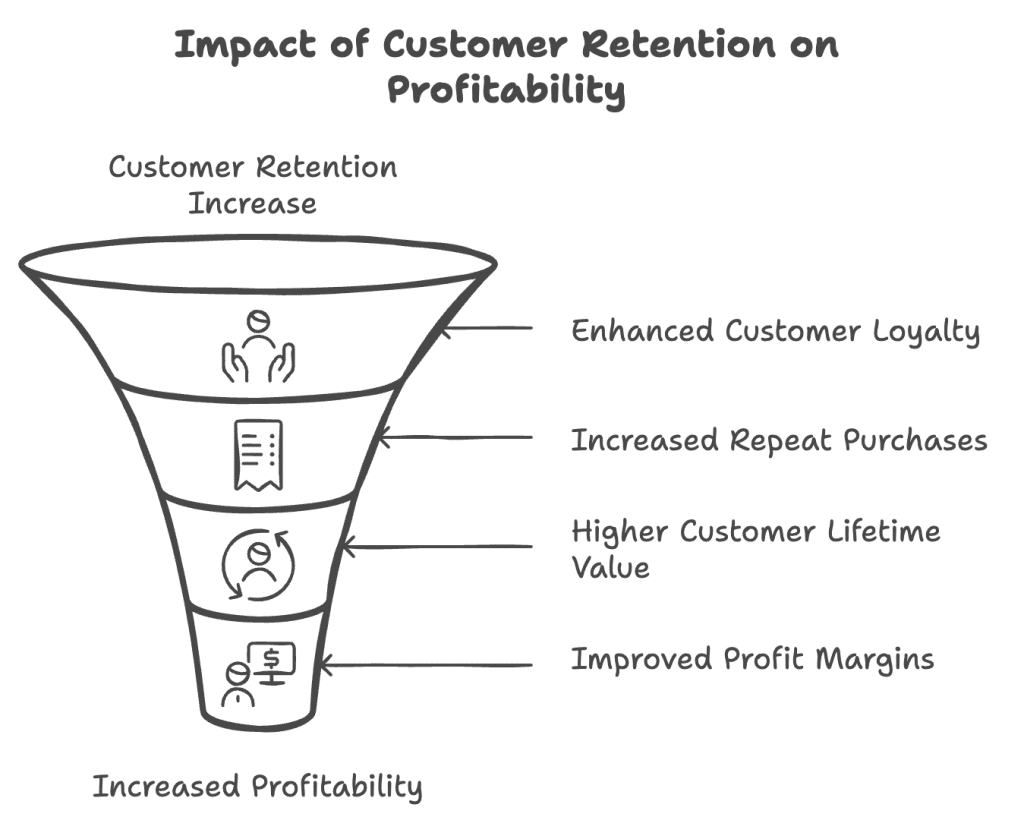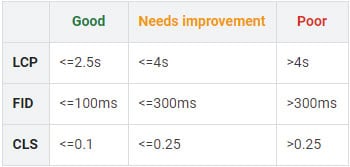- Home
- About
- Services
-
-
- Marketing and Identity
- Content Marketing
- Brand Identity
- Marketing Analytics
- Online Reputation Management
-
- Communications
- Public Relations Firm
- Crisis Management
-
- Case Studies
- Insights
In an AI-driven era, how can creators meaningfully protect their intellectual property and patents — spanning everything from code to brand visuals to ultimately unique ideas?

It will most likely come as no surprise to you that AI didn’t just create a ripple in our economy it created a seismic wave that has forever changed the game. The digital landscape is becoming more saturated then ever, quickly generated content now floods once authentic social spaces. How does one navigate being unique and protected in our new digital renaissance? This guide dives into that very topic using a blend of current data and forecasting models.
Ideas are like seeds, scattered and easily forgotten. But what about that one seed you know is worth planting and nurturing? That one mustard seed you’re willing to go all in on. What does one do with that first seed?
Plant it in the right soil.
Alright so what’s this mean exactly? Simply put:
Position your idea in the environment where it has the best chance to take root, grow, and be protected.
Soil that’s too dry, crowded, or toxic kills even the best seed. Your job is to find the fertile ground where attention, trust, and protection already exist.
Okay so let’s apply this to a real world scenario, let’s say your launching a professional grade tool that you think is super unique and solves a problem in your niche. What kind of environmental choices to you have to nest your idea.
The right audience is your fertile ground. They’ll water your idea with trust and advocacy — the wrong audience will let it wither.

Your seed won’t grow if you plant it in the wrong field. So how exactly do you find the right people to support and nurture your idea. Well, the idea in question needs to solve a particular pain-point your audience would love to solve, or even perhaps an alternate method. Here are three ways to craft out your audience, because remember you don’t want to throw your seed into a crowd of people who won’t even recognize its value.
Let’s call a spade a spade, ranking your brand on Google search can be daunting. So then begs the question, “How Can I Rank Higher on Google?”. Well don’t fret, don’t spiral, don’t spend boatloads of money and please don’t get analysis paralysis.

First things first.. you’re going to get a ton of “expert advice” on how to rank on Google fast. From Fiverr backlinks to quickly generated AI articles. Well I’m here to tell you this, good things take time and SEO is no exception to that ideology. Don’t be like 90% of small business owners and burn your time and money mass producing AI slop. Slow down, think and use a real precision strategy that leverages AI and its power and does not use it as a crutch. The precision shouldn’t stop at your game plan—you need to get laser-focused on your niche.

Keywords are targets, plain and simple. Hitting the bullseye is the goal and your darts are highly relevant and super niche content. Don’t think in terms of volume, more keywords isn’t the answer, the answer is highly niche keywords that add value to your customers online experience.
You’re probably 100% confident that you know exactly what your customers are typing into Googles search. If you let your data marinate and use tools like SEMrush to see what your site is organically ranking for, you’ll stop guessing. Instead of throwing spaghetti at the wall, you’ll move with sniper-like precision. When it comes to ranking on Google, honed in keywords allow you to move like a king and not a pawn.
Listen as said before most good things take time, however the online world is like a wave, you have to grab your board paddle out and catch it fast.
Hunt for one high-quality backlink per month from white hat vendors like RhinoRank. Ideally with strong domain authority and contextual relevance. The goal here is to strategically support low-competition, rising keywords and give them the authority boost they need to rank faster. Think of this as the “external fuel” that propels your page upward.
After publishing, don’t set it and forget it. Each article is optimized right away using tools like Yoast for on-page SEO, then revisited monthly to refine based on live data—adjusting headlines, meta descriptions, internal links, and keyword density. This keeps the content fresh, competitive, and aligned with evolving search behavior.
Together, these two moves create momentum one from the outside (authority), one from the inside (optimization) to speed up rankings and increase your online visibility.
There is one inevitable thing that lurks in your mind as a business owner in America trying to have your brand survive in capitalism. How Can I Rank Higher on Google? Faster!! Well here’s the thing you have to look at it two ways, the aforementioned way above which is the quick and easy lower effort strategies to deploy then you have to think on crafting quality content for your reader.
If you think your going to “scale yourself” and just seed the internet with junk.. No one will care about you or your brand and you will get lost in the sauce. Everyone is taking that approach and you’ll be no different. To be extraordinary you have to be “extra–ordinary”. Take the time to craft good things that your proud of, work with high level creators that will be able to have empathy and truly understand the emotion your brand is selling. This is called effort and effort will reap rewards long term.

From the beginning of civilization to the launch of the internet in 1983, physical real estate was the golden key for fruitful investments. Times have changed and the increasing value of online visibility has surpassed most real estate evaluations. Insane to think that a single webpage online has the potential to pull more revenue than owning a condo! Or is it… Today we explore the ever expanding potential and power of online visibility with 3 surefire strategies to supercharge your brands online visibility.
Craft a central digital space so magnetic, people want to stay, explore, and return.
Your website should be more than a brochure; it should be an interactive ecosystem where community, content, and conversion intersect.
Primary Software: Webflow + Jetboost – Build dynamic, user-driven web experiences with full creative control and speed.
Supporting Software: Surfer SEO – Optimize for visibility, not just design; ensure search intent matches structure, copy, and keyword density.
In 2025, shortform video isn’t optional — it’s your loudest visual handshake. Hook fast, hit hard, and leave residue in their mind.
Whether it’s storytelling, behind-the-scenes, or micro-tutorials, make your brand undeniably memorable.
Primary Software: DaVinci Resolve Studio – Craft cinematic, color-graded edits with elite control over pacing, tone, and storytelling depth.
Supporting Software: CapCut Pro – Quick, punchy, platform-native edits on the go; ideal for shortform virality and rapid iteration.
3. Leverage the Data-as-Authority Model for your Online Visibility
People trust brands that show they know. Turn your insights into powerful public dashboards, rankings, and value-driven tools.
Data isn’t just for analysis — it’s a storytelling weapon, here’s the top software to utilize. Scale your data!
Create a gated space that feels like a speakeasy for the curious. Make people feel lucky to be on the inside.
Premium content, early access, or even a private newsletter can amplify exclusivity and loyalty.
Online visibility isn’t just about exposure — it’s about creating gravitational pull. Each tool above, when deployed with intention, can create your own digital territory — one that compounds attention, trust, and income. This is the secret sauce for your online visibility!

Just what is the rule of three in advertising?
There is a great quote by DaVinci that states “simplicity is the ultimate form of sophistication.” As humans we tend to overcomplicate systems and make things far more stressful than they need to be. When in reality the answer’s been baked into human nature since the very beginning.
Here’s the answer: three is the magic number.
Not one. Not two. And definitely not four. There’s something about threes—they just tend to click with us. Whether it’s storytelling, decision-making, or structuring your day, the brain handles three better than anything else. It’s optional without being overwhelming. It’s dimensional without being chaotic and it’s sticky. You remember three things. You act on three things. You shape your life with threes without even knowing it. This is the power of “The Rule of Three In Advertising”.
One is good for obsession—but obsession has a cost. It lacks contrast, feedback loops, and range. Two creates a binary—either/or—which often traps you in indecision or polarity, which isn’t always bad per say however… Four or more? Now you’re entering mental clutter territory.

First and foremost productivity and quality is at stake. When the brain is forced to pivot constantly it never enters a true flow state. The brain starts cutting corners. It defaults. It forgets. But three—three is grounded. It gives you context, contrast, and clarity. You can rank them. Triage them. Even weave a story through them. Three gives rhythm. One is a point and two is a line. Three is a shape! Speaking of shapes, let’s talk about how this can shape your brand with the The Rule of Three In Advertising.
Not one. Not two. And definitely not four. There’s something about threes—they just tend to click with us. Whether it’s storytelling, decision-making, or structuring your day, the brain handles three better than anything else. It’s optional without being overwhelming. It’s dimensional without being chaotic and it’s sticky. You remember three things. You act on three things. You shape your life with threes without even knowing it.
Threes don’t just work in habits and jokes. The brain runs best in threes—clarity, contrast, and stickiness. That’s why elite marketers use the hook, solution, ask formula: grab attention, offer value, then invite action. One is too narrow, two creates tension, and four just leads to noise. But three? Three lands. Whether structuring your day or your brand message, build in threes—it’s how we’re wired to think, decide, and move. This is the power of Rule of Three In Advertising.
Recent neuroscience backs the Rule of Three in Advertising—our brains are hardwired to process information in patterns, and three is the smallest number needed to establish a sequence. Studies in cognitive psychology show that people are more likely to remember concepts grouped in threes due to the way our working memory encodes information. This explains why so many iconic slogans, stories, and marketing frameworks succeed when built around triads. Threes don’t just work in habits and jokes. The brain runs best in threes—clarity, contrast, and stickiness. It’s a cognitive sweet spot that delivers maximum impact with minimal overload.
Want elite decision-making? Frame everything as three paths, three patterns or 3 options. Want creative momentum? Structure your day into three focus blocks: mind, body, mission. Want to present options like a master? Give three—always. Three challenges. Three films. Three ways forward. The mind locks onto it like clockwork. There’s power in the triad. Pyramid. Trinity. Rule of Thirds. Even the joke punchline uses it. That’s not a coincidence. It’s cognitive design.
The smartest move? Don’t fight the pattern—build inside of it. This is the power of the rule of three in advertising.

There’s a big misconception swirling around the creative world—that AI is coming for our imagination, ready to replace the artist, the writer, the filmmaker. But that’s like saying a telescope replaces an astronomer. AI isn’t here to think for you; it’s here to scale your imagination, take your creative reach beyond its natural limits, and elevate your storytelling to uncharted heights.
Imagination thrives when it meets a worthy tool. The pen didn’t kill oral storytelling; it gave it permanence. The camera didn’t kill painting; it redefined composition. AI is no different—it’s a tool, not a takeover. It’s about amplification, not automation.
AI can assist in concept ideation, rapid prototyping, and worldbuilding. Say you’re a filmmaker developing a sci-fi universe—AI can generate concept art, refine mood boards, and help visualize scenes before you even pick up a camera. But the magic still comes from you. The decision-making, the taste, the soul—that’s all human. AI can throw paint on the canvas, but it’s your hand that makes it a masterpiece.
The true power of AI lies in its ability to scale creative output without sacrificing originality. Take scriptwriting—AI can analyze pacing, suggest variations, even generate dialogue in different tones. But is it crafting a compelling, nuanced story with human depth? No. That’s your job. AI just helps you iterate faster, pushing your creative boundaries while keeping the final say in your hands.
AI is also a great sparring partner for imagination—it forces you to refine your vision. If an AI spits out something generic, you know you need to go deeper. If it surprises you with an unexpected twist, you now have a new angle to explore. It’s like jazz—AI throws out a riff, and you riff back, shaping the final composition.
The key to leveraging AI without losing your unique creative fingerprint? Curate, don’t copy. Treat AI like a co-pilot, not the pilot. Use it to draft, experiment, refine, and scale—but never let it dictate your artistic voice.
The real danger isn’t AI replacing creativity. It’s people getting lazy, letting AI do all the heavy lifting, and producing lifeless work. But true artists—those obsessed with craft, storytelling, and nuance—will always use AI as an enhancer, not a crutch.
AI is the ultimate creative enabler—a force multiplier for storytellers, filmmakers, and artists who dare to use it wisely. It doesn’t replace the spark of human ingenuity. Instead, it’s the wind at your back, helping your ideas take flight faster, higher, and further than ever before.
The future of creativity isn’t AI or human imagination. It’s AI with human imagination—scaling, amplifying, and refining the stories only we can tell.
Let’s cut to the chase: SEO isn’t a magic wand. It’s more like a finely tuned, incredibly complex machine that requires constant maintenance and premium fuel. If you’re looking for “cheap and fast” SEO, you’re essentially asking for a rusty go-kart when you need a Formula 1 car. And trust me, that go-kart will break down…
…on the first lap, while you watch everyone driving circles around you.

Why does SEO feel like it’s burning a hole in your wallet? Because it’s an investment, not an expense. Think of it as planting a tree: you won’t see shade tomorrow. It requires nurturing and long-term care to see the benefits. But they are benefits that pay dividends for years.
So, here are the primary reasons why the costs add up:
The ugly truth about SEO is that you need to have a professional or a team of professionals working with you to achieve your goals. That is why there are full time jobs solely dedicated to SEO.
So, should you hire an agency or build an in-house team? Let’s break it down:
When it comes to SEO, you have to select the route you want to walk. If you could only choose two of the following three options, which two would you choose?
Fast.
Cheap.
Quality.
Whichever two you choose, you in turn sacrifice the third option.
So, I’ll ask again. Which two would you choose?
But, April! WHY!? I see people on the subreddit for SEO saying they can do my SEO for only a few hundred per month! Why are you telling me that your agency charges thousands of dollars!?
First of all, if you are on Reddit to get pricing rates for your business, you have some other issues you need to address before we chat.
Second, beware of companies promising “guaranteed results” for peanuts. They’re likely using black-hat tactics that will get you penalized by Google and are notoriously hard to recover from. Remember, Google is smarter than you think. You can’t out SEO the company that basically invented it.
Third, SEO is an investment in the long-term growth and profitability of your brand or company. SEO gives your business the stickiness on search engines, primarily Google, that you want.
SEO is a marathon, not a sprint.
So, how long does it take to see results?
You’re going to hate me for this…. It depends…
If you are in a niche and highly competitive industry, we typically see results between 12-18 months.
If you’re in an industry with little competition, you may see results fairly quickly. However, you won’t have the traffic to see the investment translate into profit right away.
If you fall somewhere between these two extremes, you can expect to see moderate results anywhere from 9-18 months.
It takes time to build authority and see results. But the payoff is significant: increased organic traffic, higher conversion rates, and a stronger brand presence. Let’s not forget that nearly ⅓ of all organic traffic still clicks on the number one position on Google.
While you may think that SEO is expensive, take a moment and calculate how much you are spending on ads on a yearly basis. You will be forced to continue paying for those ads, as they continue to rise in cost, because you never invested the money and time into the SEO that your business needs. If you had just spent the time and money, you’d be spending significantly less in ads long-term. That is why this digital marketing strategy is called an investment. And if you don’t know what that means, please leave.
I can’t help you.
If you’re looking for a “quick fix”, go buy a lottery ticket and hope like everyone else that plays the lottery. At least then maybe you’ll understand the odds. If you want sustainable growth, invest in SEO. It’s the digital equivalent of planting an oak tree and you’ll be enjoying the shade for years to come.
Here is where I am supposed to segue into the call to action to get you to call our company. But I do not want you to click that button unless you have money and time to invest in your long-term digital success. If you do have those items, please contact me for a consultation. Then, you and I can talk about how we can help you by building an SEO strategy that’s tailored to your business goals.
“Brands that leverage data-driven strategies are 23x more likely to acquire customers, 6x more likely to retain them, and 19x more likely to be profitable than those that don’t.”
– McKinsey & Company. (2016). The Age of Analytics: Competing in a Data-Driven World.

With staggering statistics showing that data-driven brands are far more likely to acquire customers, you could be sitting on a gold mine without even realizing it.. The key to unlocking your brand’s untapped potential lies in your data!
Take a look at the big players like Amazon and Netflix—they’ve mastered personalization using data to recommend products and content that keep users hooked. And Zara? They’ve nailed fast fashion with data-driven trend forecasting, getting products to market faster than their competitors and directly into their customers’ carts. By no means is this limited to the big boys though, anyone in 2025 can leverage their data to their advantage. At its core, data-driven strategies allow businesses to make informed decisions based on accurate insights about customer behavior, market trends, and performance metrics. These data driven decisions can lead to BIG ROI!
But how can I achieve data dependency? You ask..
Ultra-Personalized Experiences: Data shows brands what customers want before they even know it themselves. Think of Netflix’s uncanny ability to serve you your next binge-watch. This isn’t a happy accident, this is algorithmic magic that can use predictive models to curate the best possible content for the viewer. The more personalized of an approach a brand can take, the more likely it is to have loyal customers coming back for more and more.
Marketing That Actually Works: Forget throwing your money into the endless void of online ad space. Data-driven strategies mean you spend smarter, knowing exactly which campaigns are crushing it and which need a little tweaking. The Harvard Business Review found leverage data can boost campaign cost efficiency by 30%! That means not only will you be tapping into likely customers but you will also be saving heaps of time and money.
Your Personal Crystal Ball To Predict the Future: Data isn’t just about the now—it’s about seeing what’s coming. Predictive analytics can forecast trends and help businesses adjust on the fly. Fast fashion brands like Zara are already doing this with killer success. Understanding what will be “in” next is by product of data dependency, can you really put a price tag on that?

Data-driven strategies are not only beneficial for customer acquisition but also for customer retention. Using data, brands can predict who’s about to churn and swoop in with personalized offers or loyalty perks that keep them hooked.Understanding customer behavior through data allows brands to build more effective retention strategies by addressing pain points and delivering continuous value. For example:
According to research by Bain & Company, a mere 5% increase in customer retention can lead to 25% to 95% more profitability. Data analytics plays a critical role in identifying retention opportunities and crafting tailored strategies to keep customers engaged and loyal.
So as you can guess, retention isn’t just a nice-to-have in 2025—it’s essential.

In addition to customer acquisition and retention, data-driven strategies greatly enhance profitability. With data-backed insights, companies more now than ever can:
For instance, Walmart has utilized data analytics to optimize its supply chain, improving efficiency and reducing costs across its massive distribution network source.
As AI, machine learning, and big data keep evolving, brands that fail to embrace data will fall behind. Relying on guesswork instead of data is like throwing spaghetti at the wall and hoping something sticks. Those that adopt data-driven strategies? They’ll lead the pack, making informed decisions that drive growth and efficiency.Leveraging data is not just an advantage but a necessity in today’s market. Brands that embrace data-driven strategies can expect to achieve greater customer acquisition, retention, and profitability, as evidenced by McKinsey’s findings. The brands that utilize data to its fullest potential are the ones that will thrive in the evolving digital landscape.
As a business owner, when you truly own your data, the ball is in your court on how you leverage it! Our dedicated team of data specialists empowers you with full autonomy over your data, ensuring it’s never out of your hands and you always have data dependency. Not only do we help you access your data, but we also show you how to interpret and utilize it to your advantage. With a churn model in place, you can predict which customers are at risk of leaving and swoop in with tailored offers or solutions that keep them loyal. The power of data allows you to not only gain customers but also retain them and increase their lifetime value. Don’t let potential customers slip through the cracks—start leveraging data with us today.
Google made an announcement last year about their Core Web Vitals update and has been preparing webmasters across the globe to prioritize page experience on both desktop and mobile devices before the June update. Google’s goal is to have this be a win-win scenario for users and webmasters. A website that is both credible and has a top user experience is supposed to lend to more site visitors and, ultimately, more customers.
The core web vitals were introduced to us back in 2020. These are three specific factors that Google is now considering important in the overall user experience on your website. This update “combines Core Web Vitals and previous UX-related signals”* to measure how users experience the speed, responsiveness, and visual stability of a page. Google has stated that they are “combining the signals derived from Core Web Vitals with our existing Search signals for page experience, including mobile-friendliness, safe-browsing, HTTPS-security, and intrusive interstitial guidelines, to provide a holistic picture of page experience.”
The core web vitals are intertwined with the overall page experience and consist of:
Google has stated that “pages that receive a score of ‘good’ on Core Web Vitals are achieving an aspirational level of user experience, and might get a boost in the page experience component of ranking, provided other components of the page experience signal (HTTPA, mobile-friendliness, etc) are deemed OK.” What does this mean for you and your website? This means you need to ensure that not only do you have seo-friendly copy, alt tags, a high DA with relevant information, etc., but you now need to ensure you have a great user experience to go along with all of it. This update is a pass or fail test by Google. If you have a “Good” score, you will most likely be rewarded with a higher rank SERPs.

On the flip side of “Good” are “Need Improvement” or “Poor”. If you have urls that are labeled as “needs improvement” or “poor”, you do not get a passing grade. Keep in mind that even if you have pages that need improvement or even a couple that are labeled as poor, this doesn’t necessarily mean that your entire site is going to tank in the SERPs. Google is telling you that you need to give attention to these pages as soon as possible. However, if you do nothing at all, it can affect your rankings in the long-term.
Google has not given us a specific date as to when the core web vitals will be updated, however, we do know that it will be sometime in June 2021. The first step to preparing for the update is to visit your Google Search Console account. If you do not have your Google Search Console set up, follow the instructions on THIS page. From your GSC page, you will find your site’s Core Web Vitals data under the “experience” section. This will tell you the user experience for all of your pages for mobile and desktop. Open the report under each section, mobile or desktop, to see the urls that either need improvement or are labeled as poor. Google will tell you the status, metric type, and url group.*
To best prepare for this update, Google recommends using at least one of the following tools to measure your Core Web Vitals: Search Console, PageSpeed Insights, Lighthouse, Chrome DevTools, Chrome UX Report, Web Vitals Extension. These tools will help you obtain the information you need to get your site ready. The major steps to take to get your site ready are ones that Google has been telling us to do for years, and web developers alike have typically pushed to the back burner because we never got docked for it.
You will see this on every list regarding to-dos for Core Web Vitals and search engine optimization. Why is it so important that it needs to be #1 on the list? Images are the number one item on every web page that slows the response time. All images should be compressed or converted to a more efficient format to ensure the best loading time. No matter the format, you should never load high-res images to your web pages. Depending on where the image is going to be placed, you will need to resize them accordingly. We recommend keeping your images between 750px – 1500px. It’s best to look at every image on your site and optimize accordingly.
Without CSS, web pages in 2021 would look like most web pages from 1992. CSS is such an integral part of the internet at this point that most web pages are heavily reliant on it to show us everything we see from colors to positioning. Ensuring your code is fully optimized will not only cut down on load time, but provide a better overall user experience. Minify your CSS and consolidate your files and code. Keep in mind that what is easy for a developer doesn’t always translate to providing the smoothest user experience. Using shortcuts and plugins can ultimately slow downloading time and page speed overall.
Google has come out multiple times stating that JS is one of the biggest culprits when it comes to page shift and load speed. Keep the amount of JS to a minimal amount on your website. There are 2 things you should do when it comes to JS:
In 2019, Google rocked webmasters worlds by announcing their mobile responsiveness update. By the end of 2020, this update applied to every website on the interwebs. Since that time, Google has made it a point to express the importance of having a mobile website that provides a good user experience. With the Core Web Vitals update, it will become more important to ensure that your pages load quickly, have almost no page shift, while also providing high-quality content. This is identified by Google as a top priority.
Much like images, videos can take up a lot of space on your web pages and slow down performance significantly. A very easy way to increase load time on your web pages with videos is to have a thumbnail load as a placeholder for your video. With this, the image is going to load significantly faster and looks like the video player. It isn’t until a user clicks on the video that it actually starts to load and play. If you want your video to be loaded by the time a user gets to it on the page, load it below the fold. This gives the video time to load while users are reading the title and intro.
While this seems like a miniscule task, it has large impacts and lasting benefits. A faster server response time translates to faster loading times while minimizing delays in the user experience.
Google makes it a point to remind webmasters that content relevance is still very important. While it may not outweigh the overall significance of a site’s performance, providing high-quality, relevant content to users is still extremely important to your SERPs.
If we provided a comprehensive list of every item you need to check off to get your site ready for the Core Web Vitals update, we would be here until June! However, this list is a great place to start. Google is leaving nothing to chance and has made the most efforts to date to provide us with all of the information that we need to prepare. The best way to start this process is to pay a visit to your Google Search Console. Once you have a good idea of what is happening on your web pages, based off of the list above, determine which issues you will first tackle. Remember, if you’re low on time, patience, or both, Emerald Digital is always here to help get your site ready for the biggest update from Google to date.